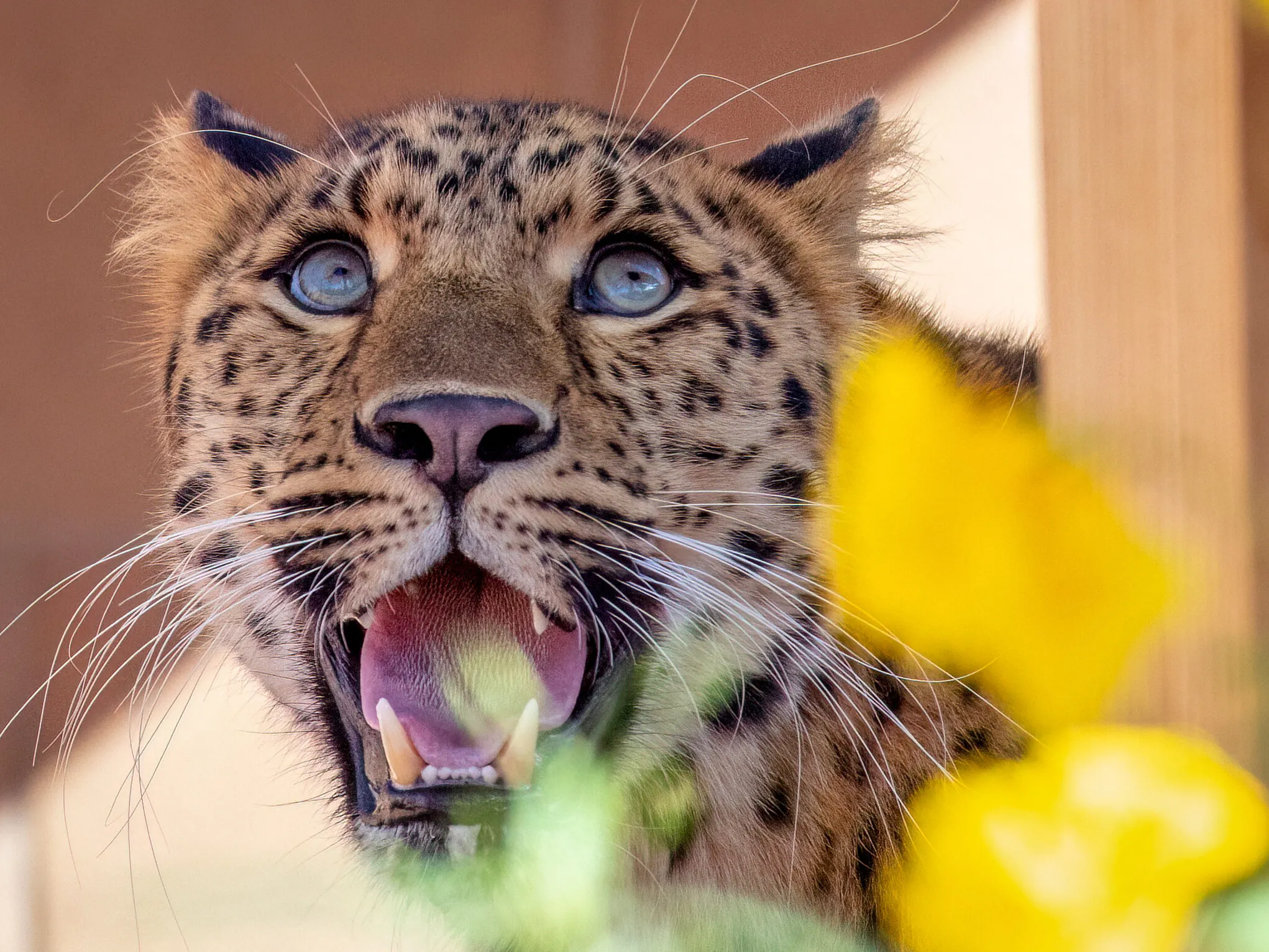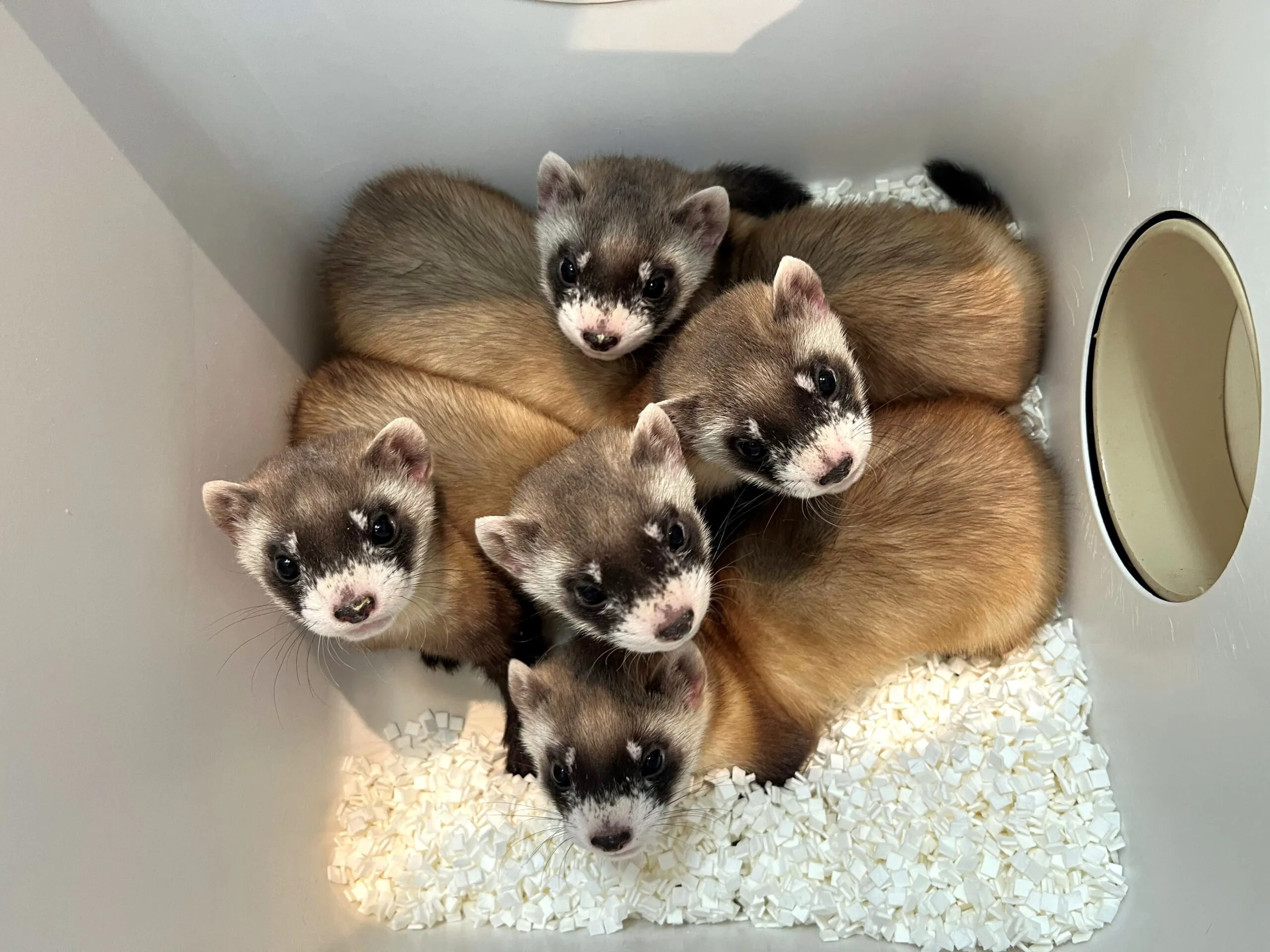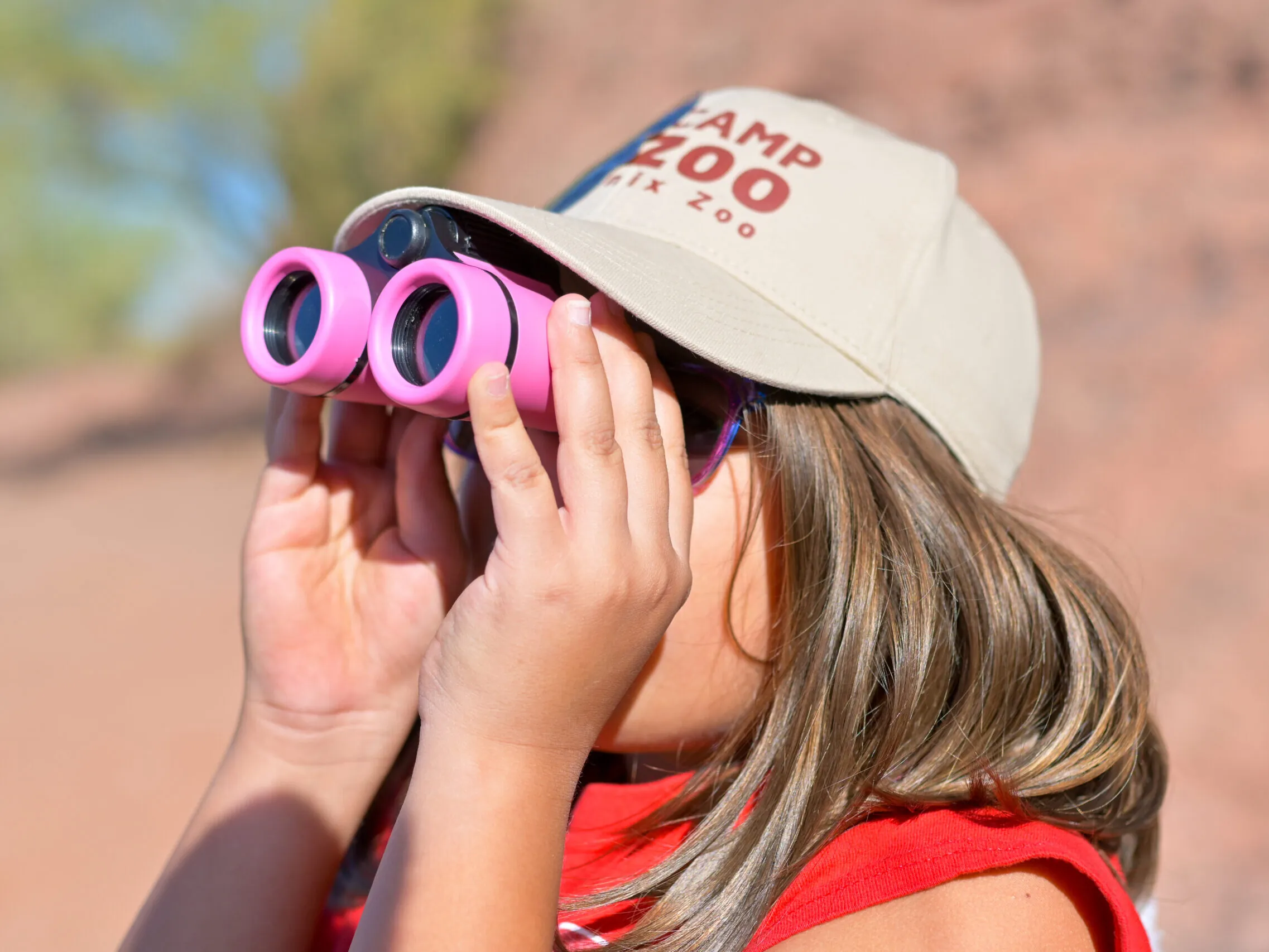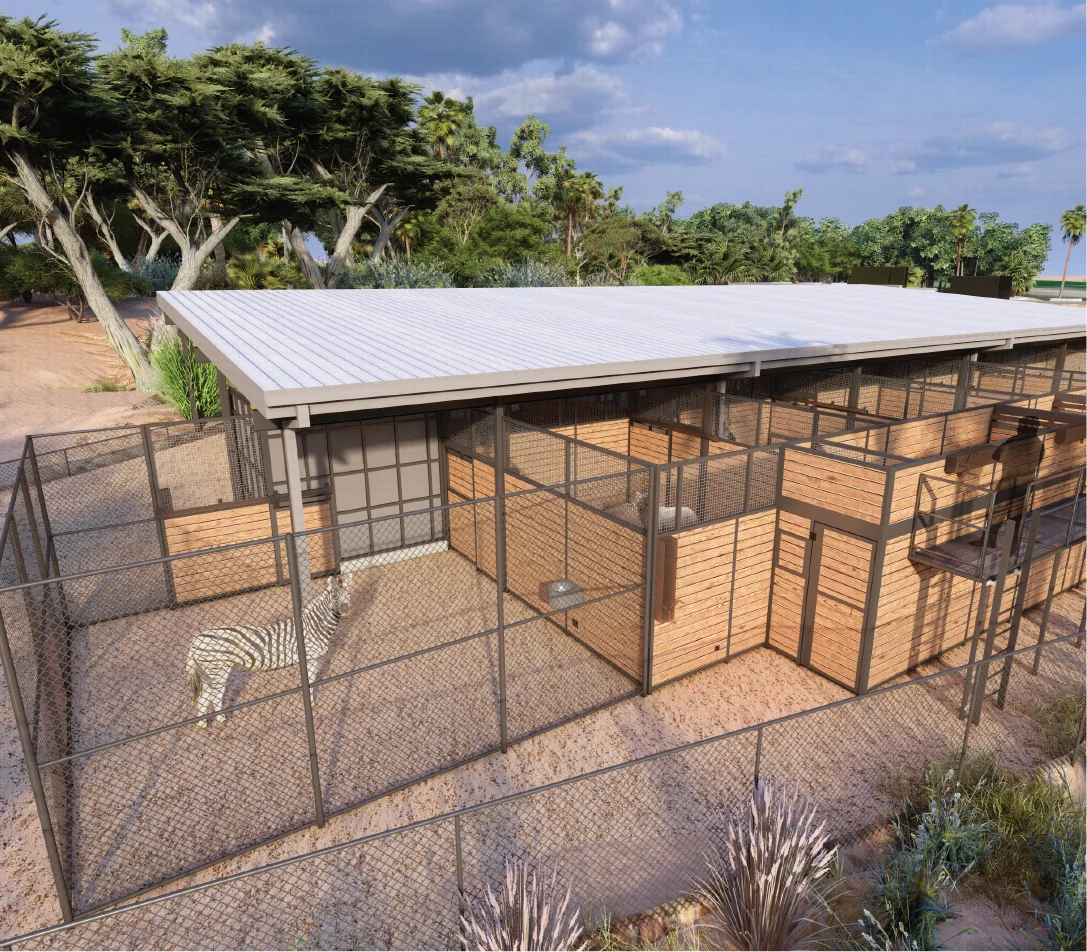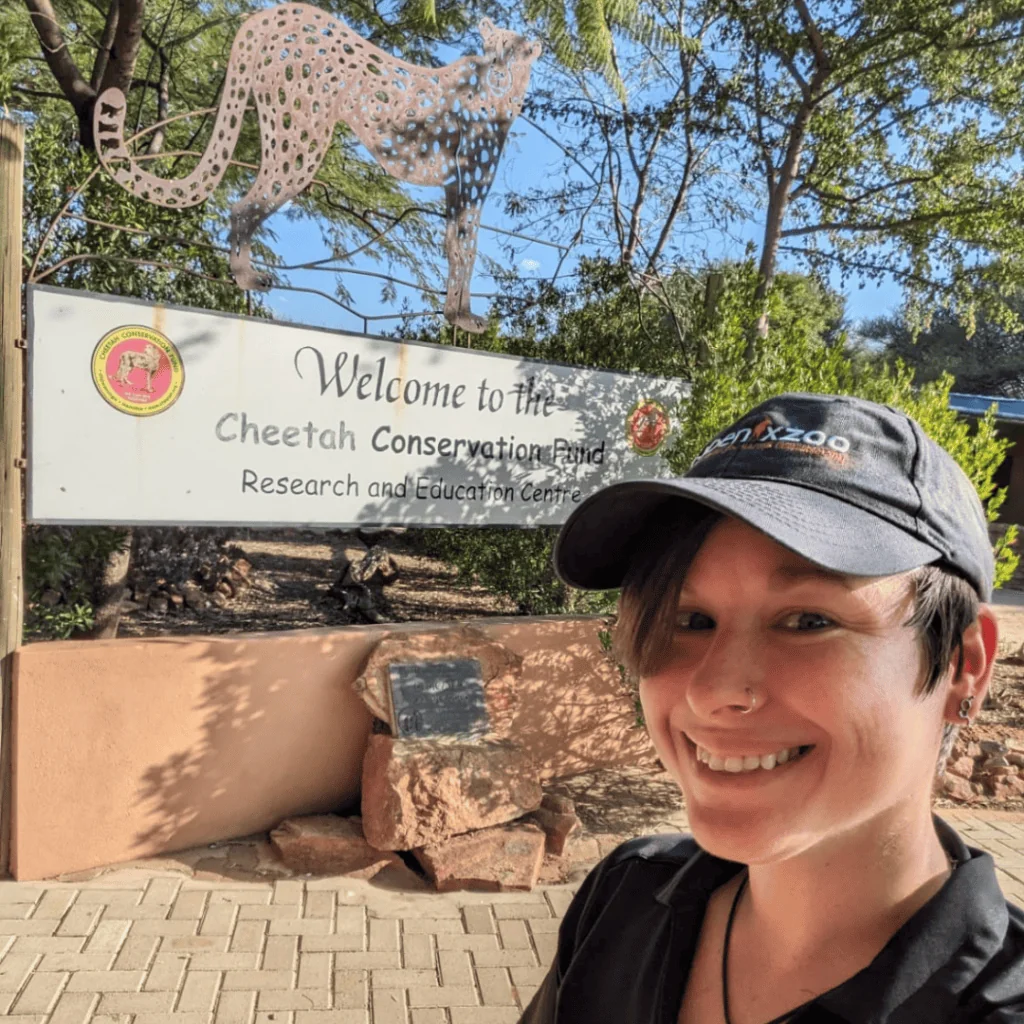
Every year, Phoenix Zoo zookeepers participate in conservation efforts with organizations around the world. Most recently, Relief Keeper Lauren traveled to Namibia to help the Cheetah Conservation Fund.
In the diary below, Lauren fills us in on what her day to day looks like working in the field.
Day 1
I arrived at Windhoek Airport in Namibia at approximately 8:30 a.m. The first thing I noticed as I got off my flight was how bright the sun seemed here. Bird songs greeted my ears, one of which I recognized as the peach-faced lovebird. After I collected my bag and made it through customs, I met up with my taxi driver, Cappie, and we began our four-hour drive to the Cheetah Conservation Fund. That may seem daunting after 32 hours of air travel, but within the first 20 minutes I saw a yellow billed hornbill, a vulture and small troop of olive baboons! The remainder of the drive proved to be just as fruitful for viewing the local fauna. We were graced with a gemsbok, giraffe, springbok, sable antelope and Kori bustard.
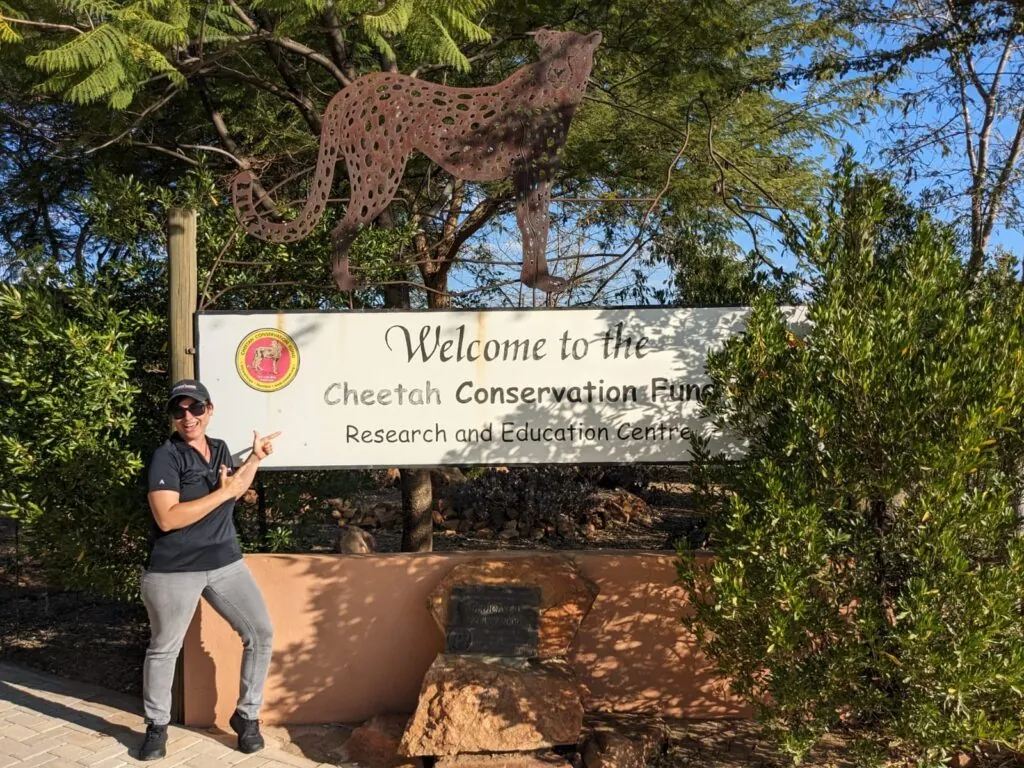
When we arrived at the Cheetah Conservation Fund I was ushered into the education office to meet Joe and the Manager of Education Shannon. After I filled out some paperwork and watched a quick orientation video, Joe showed me around the facility, museum, model farm, guardian dog kennels, creamery (where we got a sample of delicious goat milk fudge) and finally my lodging.
A cozy rondavel, a traditional circular African dwelling with a conical thatched roof, will be my home for the next seven days. Shortly after I settled in, a small flock of gray go-away birds, some cape glossy starlings and another baboon welcomed me!
I wasn’t given any work on my first day, they graciously wanted me to have some time to acclimate, but I was informed that tomorrow I’ll be attending an outreach to a local school.
What strikes me already, is how impassioned and dutiful everyone working here seems. The Cheetah Conservation Fund has a multitude of community centric and driven goals, and it certainly shows in the enthusiasm of their staff.
I absolutely cannot wait to see what the next few days bring!
Day 2
The morning dawned with the sounds of more yellow-billed hornbills, and one even politely let me record his display call. I grabbed a quick breakfast at the “Hot Spot,” a centric location where the Cheetah Conservation Fund serves meals for its employees, interns and volunteers then made my way to the education offices to meet up with Iggy who conducted the outreach at a secondary school in Otjiwarongo. There was a bit of a delay before we could depart, so I was sent to the Chewbacca Memorial Garden, affectionately named after the first cheetah Dr. Laurie Marker brought to the facility, to assist with some tasks there. I picked green leaf lettuce, mustard greens, spinach, and chili peppers that would all be used to make food for “Hot Spot” meals. The facility is incredibly sustainable, grows much of its own food, both for humans and animals, is almost entirely supported with solar panels, and has access to groundwater. It’s quite impressive how skillfully all the resources are used.
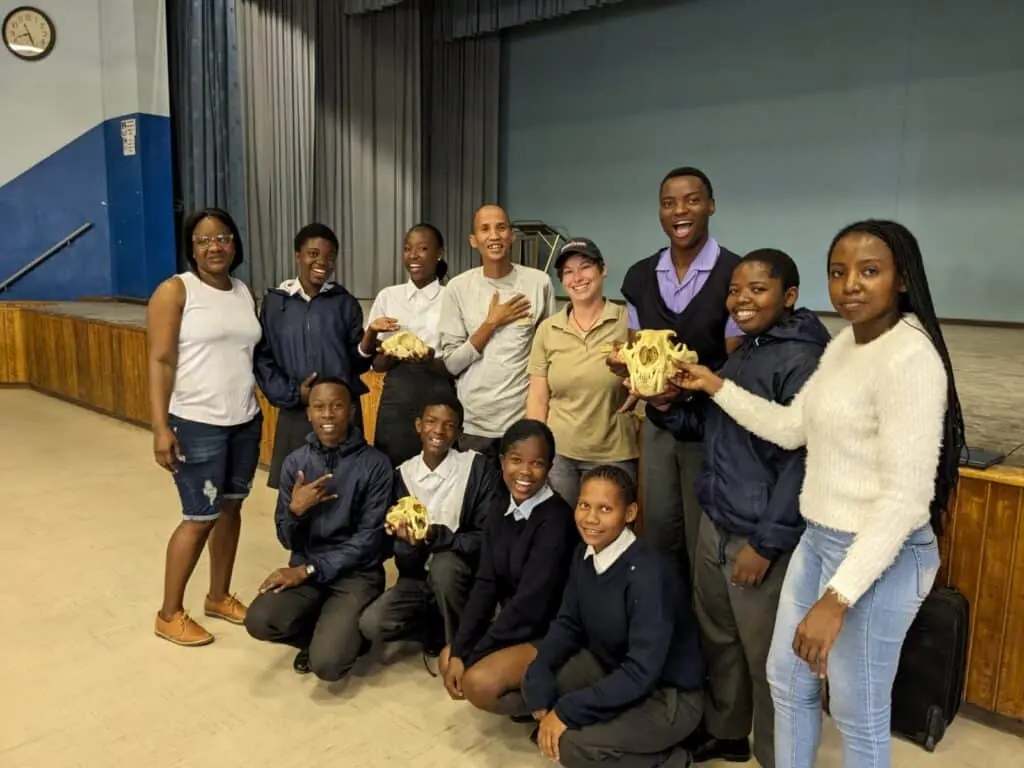
Finally, it was time to head off to the outreach, Iggy and I brought along some model predator skulls (lion, leopard, and cheetah) to enhance the lecture. The drive to the school was about 45 minutes. We presented to sophomore level students who were all members of the school’s environmental club. Iggy presented wonderfully about the center, the crucial role that predators play in a natural ecosystem, the human-wildlife conflict, and how conservation efforts can help preserve keystone species and keep a healthy balance in nature. I was asked to chime in about the threats of modern species going extinct in our lifetime, so naturally I had to mention the Phoenix Zoo and our roles in black-footed ferret and Arabian oryx conservation efforts. The students were pleasantly engaged with our talking points and asked some pointed and engaging questions. On the drive back, I spotted banded mongoose, yellow mongoose, a shaft -ailed whydah, sociable weavers, a bush duiker and some impala.
Back at the center, I was tasked with meat preparation and got to go out into one of the many large enclosures they have for housing permanent cheetah residents. There are 29 current cheetahs at the Cheetah Conservation Fund, three of which are candidates for “rewilding” and release. Most of the cats are fed meat still on the bone, with the excess fat trimmed off. This was a tedious chore, but me and a member of the cheetah team managed to get it done in good time. I hopped in the back of a Toyota Legend to go out into the large enclosure to “spot” the cheetahs. We found an elderly girl named Bella and made sure she got her portion of food since she is housed with two other cheetahs. That concluded my duties for the day, and I was dropped back off at the Hot Spot for a few games of volleyball with some staff and interns before dinner was served. A Turner’s thick-toed gecko wished me goodnight on my rondavel door.
Day 3
I was with the cheetah team all day. We started our morning off with a cheetah run, which is an opportunity to exercise the cats and something that guests at the facility can book.
I threaded the line for the lure, which happened to be white and blue cloths strung together, and Lea, the head keeper, got the lure machine ready to run. There was a pretty large group of tourists in this morning’s run. After they were given a safety brief, we ushered them into the large cheetah pen. The four cats who participated in the run were moved to a holding enclosure. There was a ‘“human” holding enclosure in the middle of the exhibit that all the guests and staff (except for Lea and another keeper) filed into. I’ve seen a few different cheetah runs at various zoos in the United States, but this one was unique that the guests were IN the enclosure. This gave them optimal viewing as the cats zipped past.
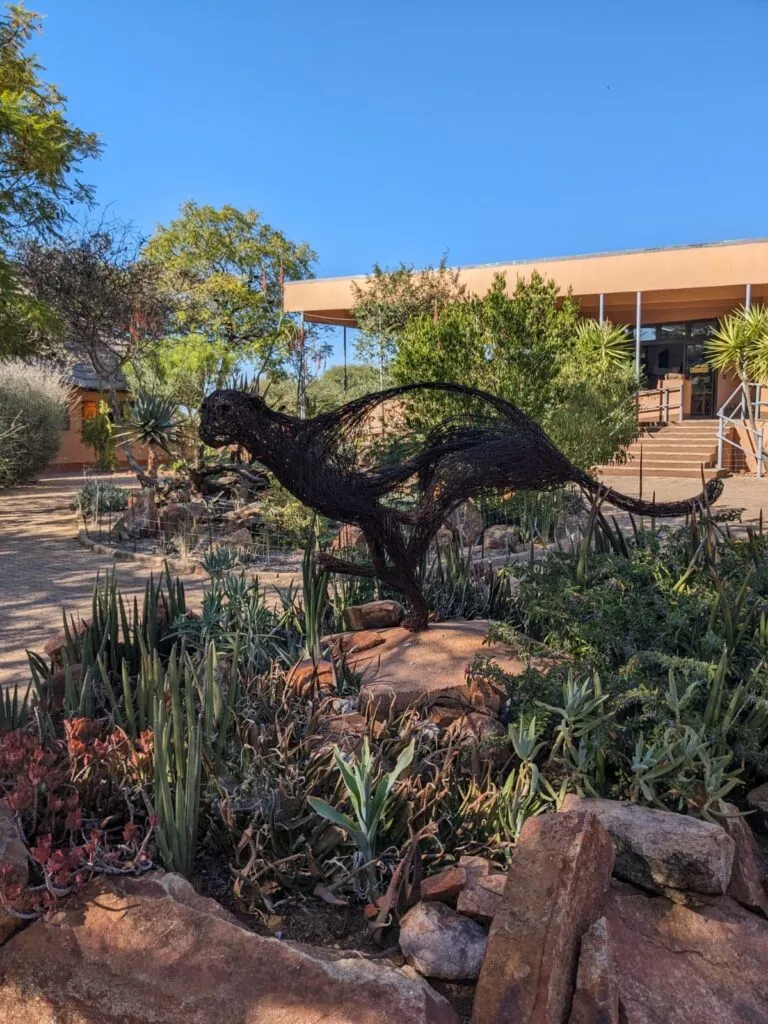
The cheetahs would often catch the lure. When they did, Lea would reward them with some small pieces of meat strategically placed on a long wooden spoon so she could still maintain a bit of distance, even though she was in the enclosure with the cat. Once all four cheetahs had a turn at running and were tuckered out, the cats were briefly placed back into the holding pen so we could usher the guests back out. The Cheetah Conservation Fund runs their cheetahs regardless of if there are bookings or not because it provides great exercise for the cheetahs and it acts as a form of behavioral enrichment. A cheetah’s body was designed to run and having opportunities to do so provides the cats with mental stimulation and enrichment. Plus, giving the guests opportunities to see this incredible ability really inspires them to actually care about the Cheetah Conservation Fund’s mission, and saving wild cheetahs. It encourages them to do their part to help, whatever form that may be.
Once the run concluded, it was time to feed some of the other cheetahs on site and get to cleaning! Several of the cheetahs required supplements and medications, much like the animals at the Phoenix Zoo. The Cheetah Conservation Fund keeper staff took utmost care to make sure each ambassador animal got what they needed. They have cheetahs ranging from 10 weeks old to 15 years old, with 5 out of the 29 being eligible for release back into the wild. One of which, an adult female, is kept in an enclosure that’s a 10-minute drive away from the main facility. This is to provide her with the best opportunity to maintain her wild disposition. Keepers still feed and provide her with water, but interaction is kept at a bare minimum. The Cheetah Conservation Fund also houses one African painted dog named Zebra Legs, and we were tasked with his husbandry as well. A lilac-breasted roller zipped past us as we approached his enclosure.
After lunch, it was time to do meat prep for the following day. We got our hands dirty, as we had to remove excess fat and small bones from the chunks of meat. After that, it was one last round of feedings and time to wrap up our day. Kudu, crested lapwings, and Guinea fowl were other notable sightings of the day.
Day 4
My next scheduled department was with the livestock guardian dog team. We began our day prepping breakfast and supplements for the canines and delivering them to the eager pooches. Most of the dogs were Anatolian and Kangal shepherds, which, despite all being nearly over 100 pounds each, were very mild mannered and greeted us with thumping tails and excited whimpers. The dogs are bred on site, and the puppies aged 11 weeks are placed with Namibian farmers (after they complete an application process) to protect their herds. These dogs are not herding dogs, so the Cheetah Conservation Fund advocates herders to still go out with the flocks. However, the booming bark of these large dog breeds can ward away predators with relative ease.
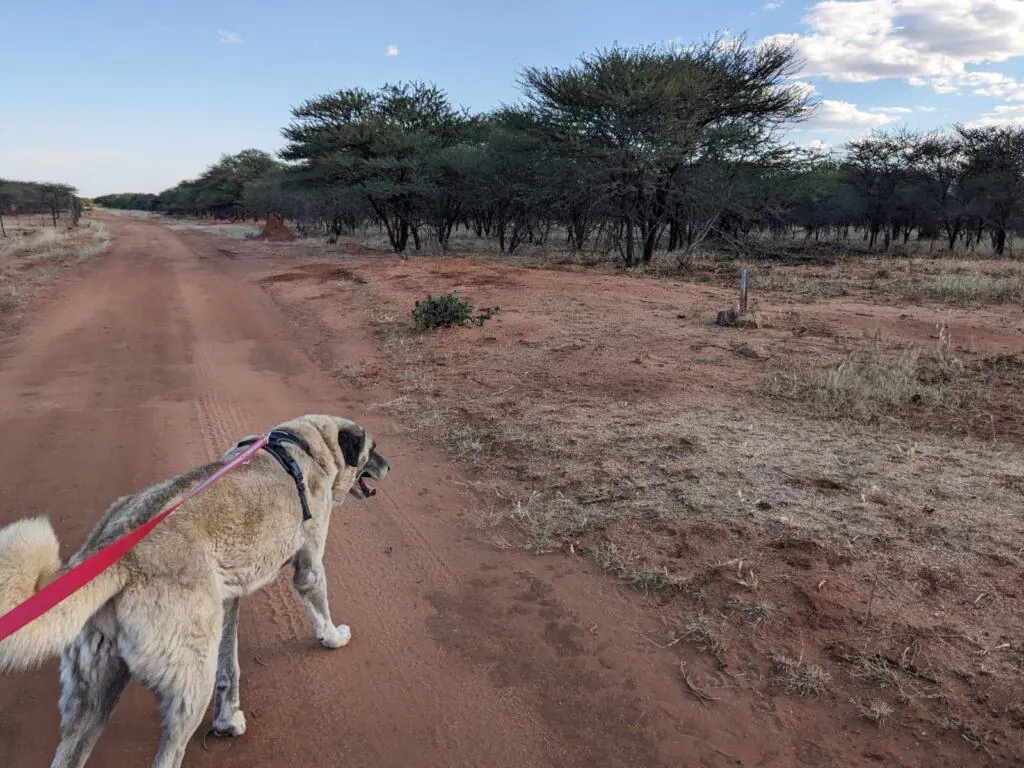
Since this program has been in place, farmers who received the dogs experience anywhere from 70-100 percent success rate of livestock lost to native predators. Calum, the department manager, boasted, “The dogs are the ones doing the work, yes the cheetah is important, but these dogs are the backbone of our success.” The Cheetah Conservation Fund has over 130 dogs out working in the country. One of the fantastic things about this program is that the Cheetah Conservation Fund offers veterinary care should one of the dogs become injured. They also do welfare checks on the animals they place, to be sure they’re receiving the proper card from their new homes.
One of the dogs with the biggest personality was also among the smallest. Bushman, was what the Namibians call a mongrel, which essentially means mixed breed. He couldn’t have been more than 20 pounds. This, however, did not deter him from barking loudly at any other dog that came near his enclosure, and as I was told, going paw to paw with a leopard. Because of his bold personality, and the fact that some Namibian farmers were struggling to afford food for the larger dogs, the Cheetah Conservation Fund, for the first time, has begun breeding mongrels as guardian dogs. This is a test phase for the center, but if any of Bushman’s pups develop the same confidence as Bushman, I have no doubt that it will be a success.
After the kraal (enclosure) dogs were tended to, we went to a veterinary clinic where four dogs that were brought in by farmers were being cared for. Dogs that are sent with farmers are spayed and neutered, however since they are working dogs, sometimes accidents occur. Maisie had a broken leg that was healing up nicely but was still not quite ready to return to her home. I took her for a short walk around the facility and made sure to give her plenty of scratches. So many of the dogs were affectionate, even to strangers. It was clear to me why they made such great guardians.
Once the dogs were fed and cleaned, it was time for me to give a presentation to some interns and staff about who I was and what I was doing at the center. I hadn’t realized that this would be part of my stay at the Cheetah Conservation Fund, but I just so happened to have my thumb drive with me that still had my cheetah presentation I had made for the Conservation Board. The “About Me,” section fit in quite nicely, and several people asked questions about the Phoenix Zoo and our animals.
The day flew by, and it was time to feed the dogs dinner. I was asked to walk one of the kraal dogs, Bolt, so we set off through the savannah. I must say, it was quite the experience walking such a massive dog through such an incredible ecosystem. Bolt, fortunately, was a proper gentleman and our walk went smoothly. I wrapped the day up with volleyball and a delicious burger at the Hot Spot. Saw several crimson-breasted shrikes today!
Day 5
Another day with the cheetah team meant another day of feeding, cleaning and helping conduct the cheetah run. A group of the public facing cats are referred to as the “ambassadors,” much like we refer to our own Zoo animals, since they are serving the same purpose, allowing people to get an up-close look at these magnificent animals, while advocating for their species. There are several cheetahs in holding enclosures “behind the scenes,” for the purposes of rewilding or that they are simply not suited to be public facing all day due to age or temperament.
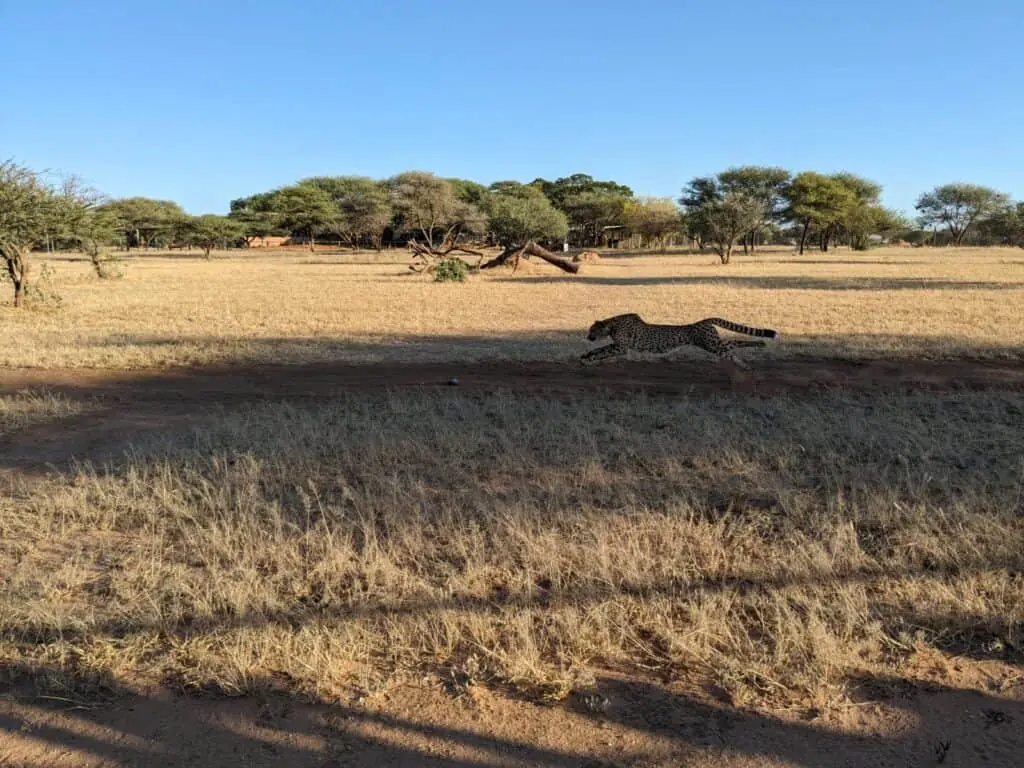
One such cheetah, called Al Pacino was one of my favorites at the center. He came from a private owner where he was housed with two other cheetahs and bears multiple scars on his face. His teeth were nearly all gone from age, so staff members tong fed him most of his diet. This also allowed them to put in eye drops. Another such cheetah was Bella who needs fluids twice daily, and who had a penchant for not shifting when the keepers wanted her to. They were still able to administer fluids free contact and very carefully while Bella had a tasty snack to focus on. Not that I expected anything less from this wonderful facility, but it was still heartwarming to see the consideration and effort the keepers put into making sure each cheetah’s needs were being met.
The Cheetah Conservation Fund is in the process of expanding all the enclosures for the cats. The previous rule from the Namibian government, was that each cat needed 1 hector of space. They have now increased it to 5 hectors of space. It was great to see and hear how involved the local government is with its wildlife. It’s illegal to even pet or touch a wild cheetah in Namibia, and it is taken very seriously. Poaching, habitat loss, and the illegal wildlife trade are among the persistent threats to cheetahs.
Two of the youngest cheetahs, Hamish and Kweli, were due for their monthly dewormer, and I was amused to see that they were given their medication very similarly to how we medicate our animals at the Zoo. Hiding them in a delicious meat treat did the trick!
Admittedly, trimming the meat chunks was my least favorite task. There seemed to be a technique that I could not quite get down to remove the small bones and the excess fat got quite slippery after a while. It was great to see the cats getting such fresh meat, but this was a grueling task and left me grateful for the nutrition service team we have at the Zoo.
After bit more cleaning, it was time to tend to Al Pacino and Bella again, and to the chatter of white-browed sparrow weavers and Carp’s tits.
Day 6
Another day for the dogs – kibble and supplement prep, then cleaning and walking clinic dogs. There are 21 resident dogs, 4 dogs in the clinic and 5 puppies. Tending to the puppies was quite entertaining, as the rambunctious pups would chase you everywhere and immediately try to bolt through any open door. They spend the night with a small herd of dairy goats to begin the herd bonding process and are let out into a play enclosure during the day. I certainly wasn’t averse to spending time with them, they are little conservation heroes and don’t even know it!
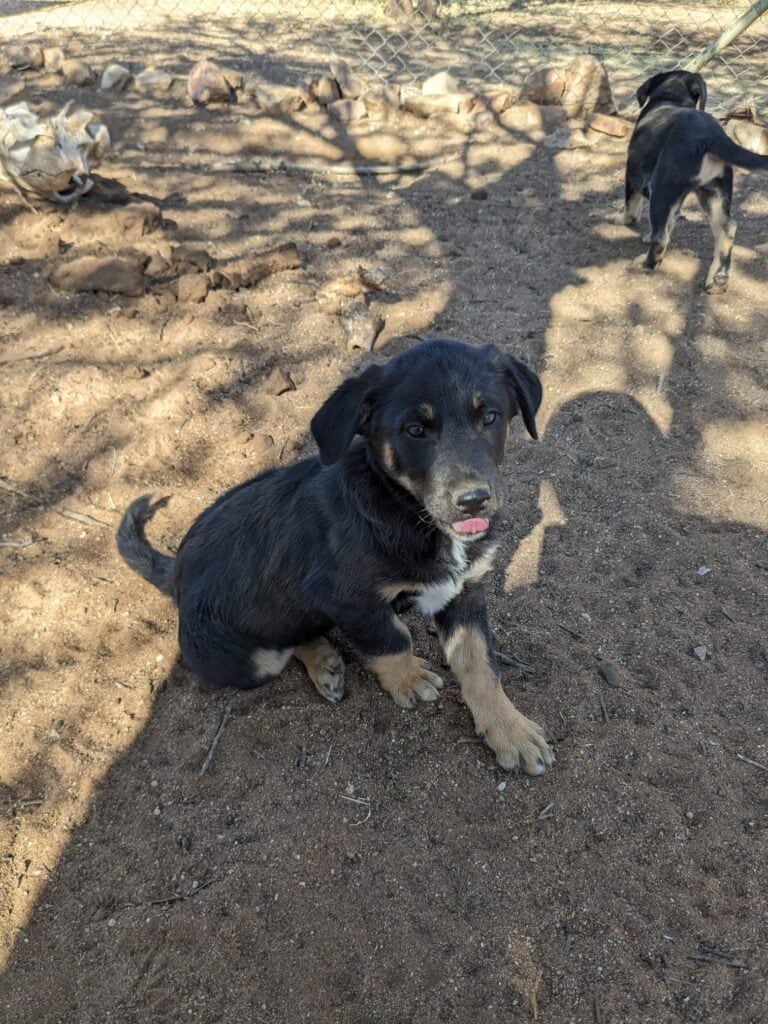
The morning would bring news that another dog had been brought into the center. Bobby had been confiscated from his placement farm during a welfare check (Cheetah Conservation Fund makes sure all the dogs they place are being treated well) due to his condition, and at first glance it was very clear why. You could see his ribs and hip bones protruding due to malnourishment. Two veterinary interns checked him over, and we gave him a hearty breakfast that he happily chowed down. It seems easy to want to point fingers and get angry at the farmer who neglected the dog, but the fact of the matter is that many rural farmers in Namibia are living in poverty. Guardian dogs are wonderful additions to the farms but can also end up being quite costly to care for. Ultimately, if the farm cannot provide for the dogs, the Cheetah Conservation Fund will take them back. With some time and hearty meals, Bobby will be back to a healthy condition. We had to scuffle the tall grass to clear the enclosure being set up for him, which I rather enjoyed.
A soccer tournament was hosted at the Cheetah Conservation Fund, which many of the employees participated in. So, I took the opportunity with an extra-long lunch to have a treat of the goat’s milk ice cream they make on site at the creamery. It was delicious! The creamery serves as an example to the types of things that farmers can utilize, and monetize, dairy goats for and provide employment for local Namibians. I also got to enjoy many of the cheeses in my provided meals! I enjoyed my ice cream while watching Cape ground squirrels scurry about the property.
I watched a bit of the soccer tournament. It was cool to see how many members of the nearby communities came out for the game. Then it was time to do afternoon feeds for the dogs. We had some extra help from the vet interns, and we made quick work of it. I got to spend a bit of extra time with the mongrel pups, which was a great end to my day of work.
Day 7
My last day at the center arrived, and I got to spend the day with the cheetah team once more. African red-eyed bulbuls greeted me as I started my day. We set up the cheetah run, and I got to see these magnificent cats run nearly their top speed of 70 mph. During the run, guests would ask questions. A question that would come up frequently was why the Cheetah Conservation Fund was not breeding cheetahs to be released back into the wild, which was something I had been wondering as well. It turned out there was a law instated by the Namibian government prohibiting the breeding of large cats in captivity to help control the illegal pet trade. There is also an issue with cubs being born in captivity not learning how to properly hunt, and what to avoid (humans, larger predators, etc.) and considering 95% of cheetahs in Namibia live on farmland, if the cats become too comfortable around humans, they become more at risk of being shot by farmers and poachers.
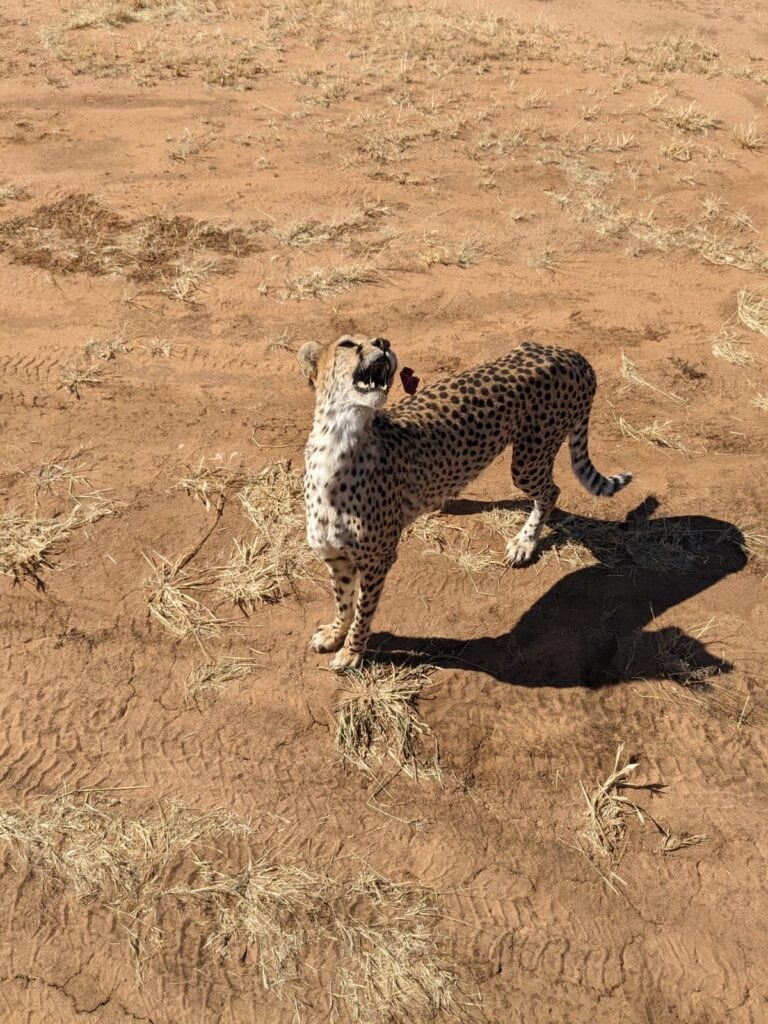
When cheetahs come to the Cheetah Conservation Fund at six months or older, they are automatic release candidates, because at that point in their lives they have retained much more of their “wildness.” It is possible for younger cubs to be paired with an older, wild cheetah that is due for release, and the Cheetah Conservation Fund has had some success with this method, especially if the cheetahs are both male. While female cheetahs are generally solitary, male cheetahs will often form coalitions with other males. They hunt together and even search for mates together, although the female gets to decide who the lucky suitor is, which gives them an advantage in both catching food and staying safe from larger predators. Wild cheetahs tend to lose at least 50% of their kill to other predators and scavengers, so having some comrades to help defend the food comes in handy.
Today was a particularly exciting day, because we had to move two of the wild young cheetahs, Mapenzi and Delilah, to a larger enclosure. The transfer was very similar to how we transfer large animals at the Zoo. We strategically placed the crate, encouraged the cats to go in, and closed the door behind them. These transfer crates were also designed to allow a “squeeze,” to nudge the cats to one side, and allow for vaccinations. The cats were vaccinated, given dewormer, and then driven out to the enclosures that were further away from the facility. They wasted no time zipping out of the crates and enjoying their new surroundings. A tawny eagle soared around, making for quite the picturesque scene.
Cleaning, meat prep, visiting Al Pacino and Bella, and then the day was done. I was particularly eager for nightfall, because I was informed, we would be going on a night drive to monitor species on the preserve. While there are several camera traps set up for game monitoring, the Cheetah Conservation Fund staff conducts several drives throughout the month to gain estimated knowledge of what animals are active in the area. This is important, because it gives a sense of the health of the ecosystem from prey, predators, and keystone specie numbers. Nearly every cheetah that is released by the Cheetah Conservation Fund is given a radio collar for monitoring, and cats are often followed for several weeks to make sure they are successfully hunting, and otherwise thriving out in the wild.
The night drive was a fantastic opportunity for wildlife viewing. We saw red hartebeest, oryx (gemsbok), steenbok, giraffe, a Cape porcupine, spotted genet, jackals, Cape vultures, many hares, and a very majestic male kudu. It made for a truly marvelous bookend to my experience here. In a world where deforestation and habitat loss threaten an innumerable number of animals, it’s so very beautiful to see nature preserves, such as this one, thriving. It fills me with hope for the future of our natural world.
My only regret in this adventure was not planning more efficiently to stay a little bit longer. My week was rich with many conservation efforts that the Cheetah Conservation Fund is spearheading, but there were still many factions of the facility that I didn’t have time to explore.
The Cheetah Conservation Fund has created one of the most effective community engaged conservation programs I’ve ever had the pleasure of witnessing. The sustainability practices of the center are truly inspiring, and I can’t help but wonder which other species (and communities) this model could be utilized to protect.
Recent Posts
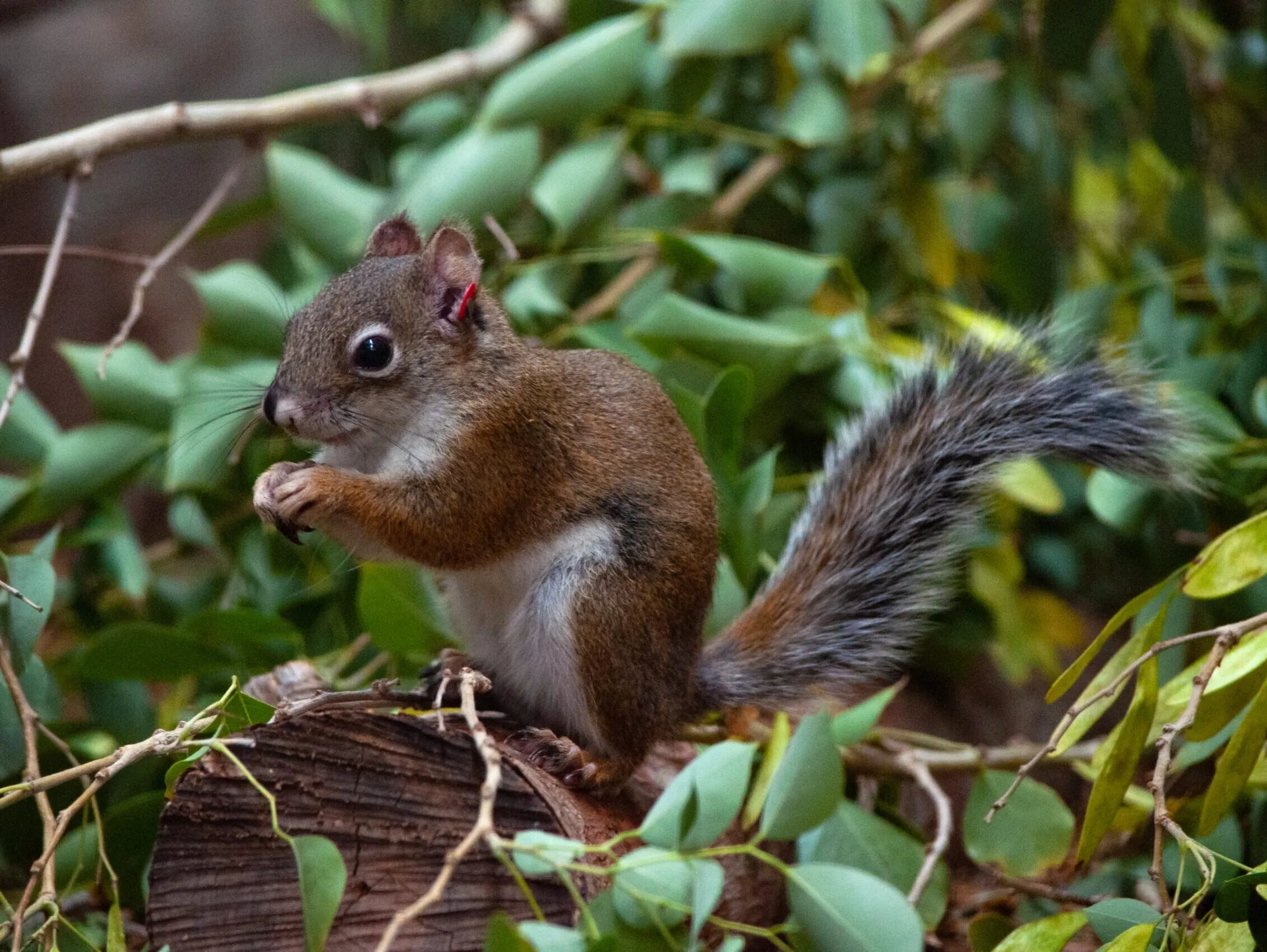
Hope for Mount Graham Red Squirrels
Did you know that behind-the-scenes, Phoenix Zoo’s Conservation and Science team has been working to develop a breeding program for the highly endangered Mount Graham…
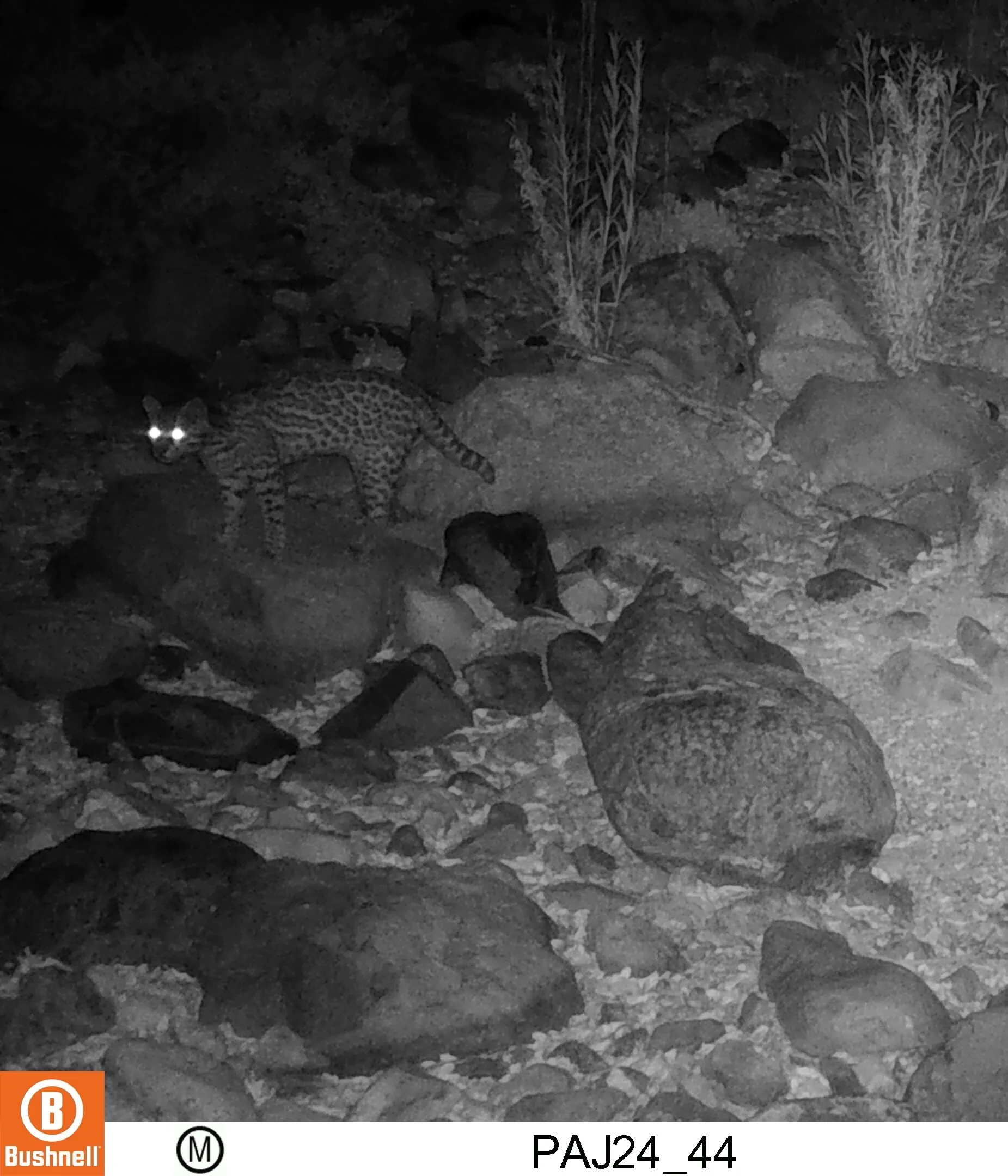
Phoenix Zoo Field Cameras Record New Ocelot in Arizona
Exciting news! The Phoenix Zoo’s Atascosa Complex Wildlife Study recorded a video of a new ocelot in southern Arizona in June. The Zoo’s field cameras…
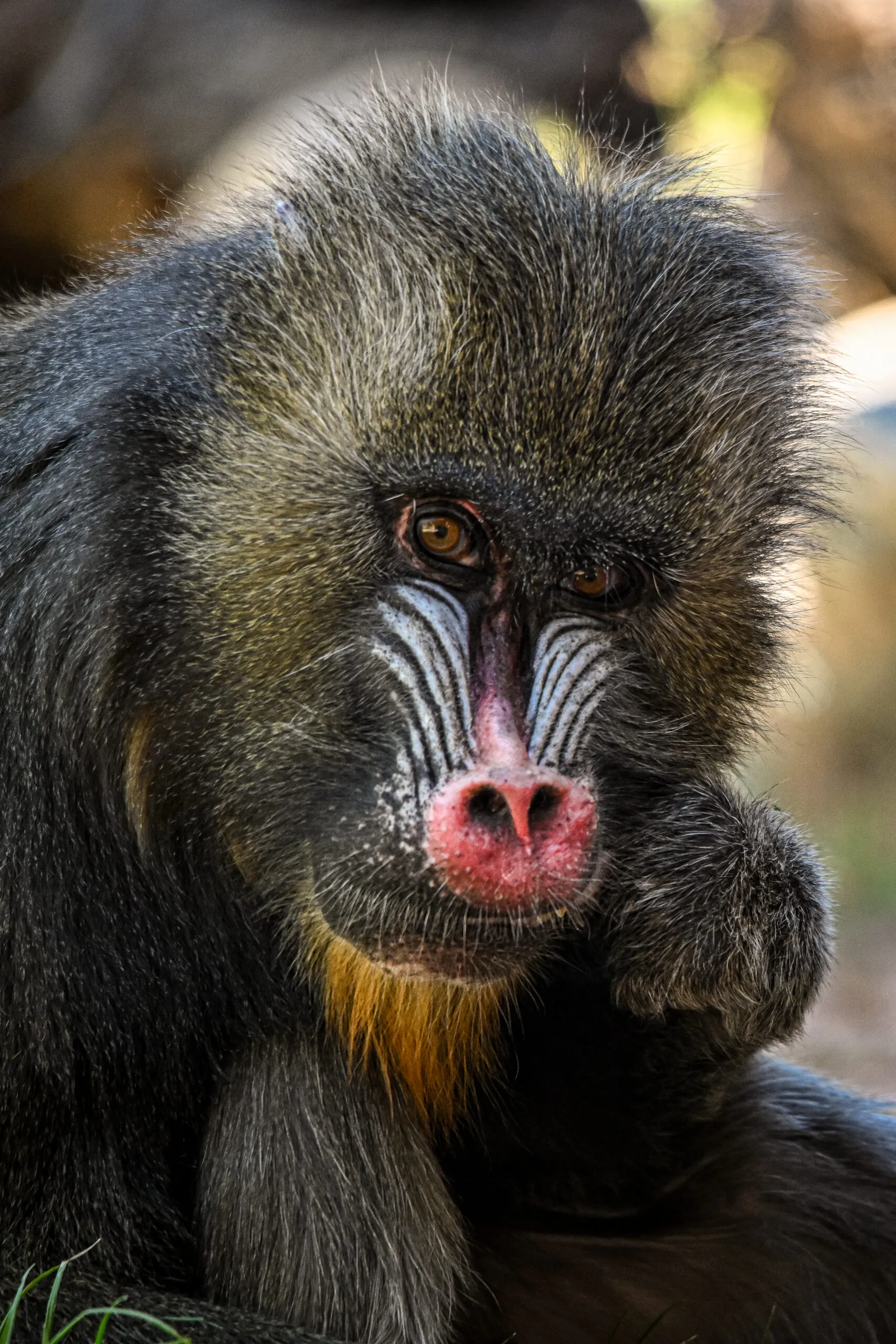
Nikki is a Guinness World Record Holder!
Nikki the mandrill is officially a Guinness World Record holder! At 37, she is the oldest living mandrill in managed care. Nikki joined us from…
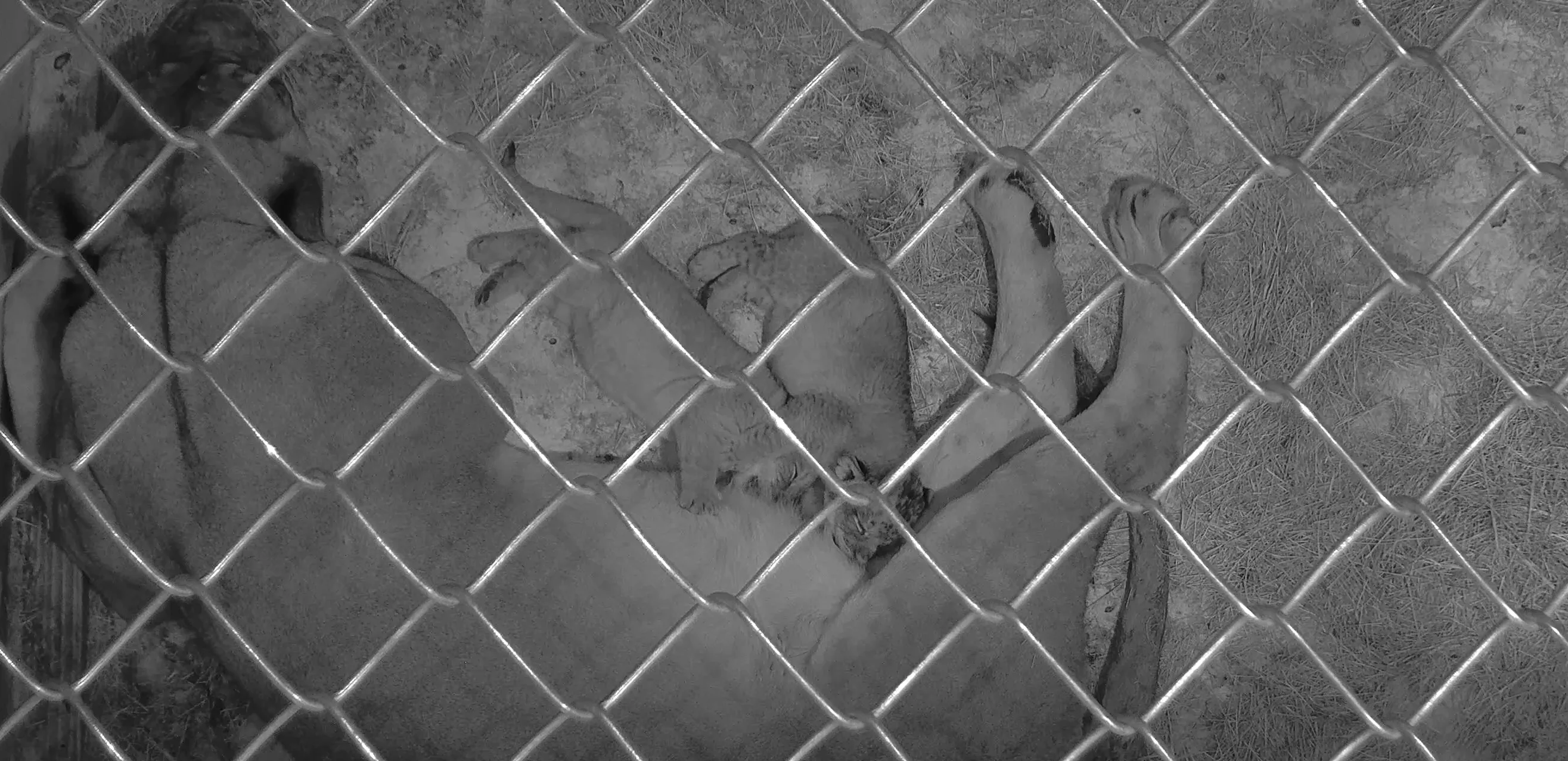
Phoenix Zoo Welcomes Two Lion Cubs
The cat’s out of the bag! – The Phoenix Zoo is excited to announce that six-year-old lioness Zuri gave birth to two cubs on Monday,…
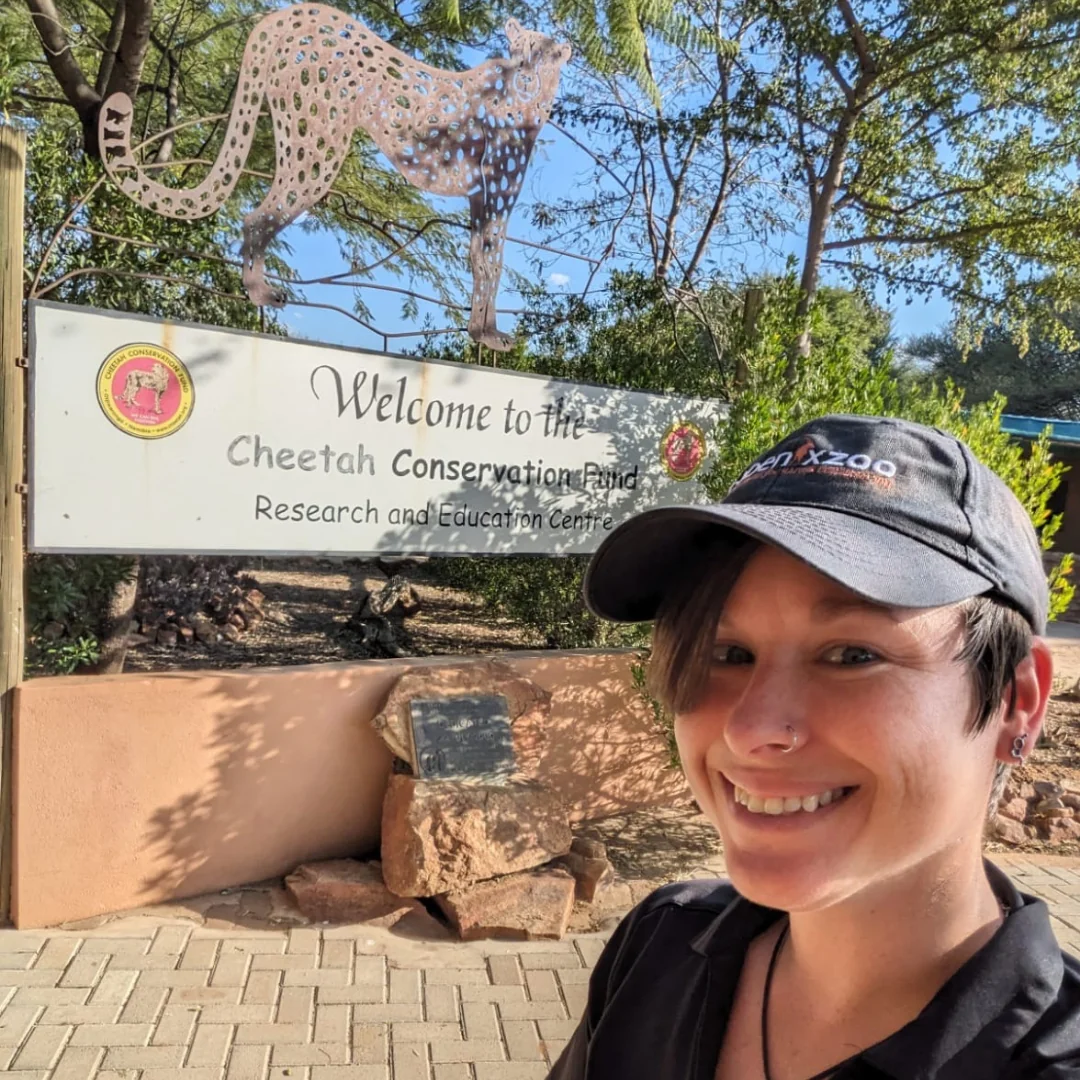
Cheetah Conservation Fund
Every year, Phoenix Zoo zookeepers participate in conservation efforts with organizations around the world. Most recently, Relief Keeper Lauren traveled to Namibia to help the…


